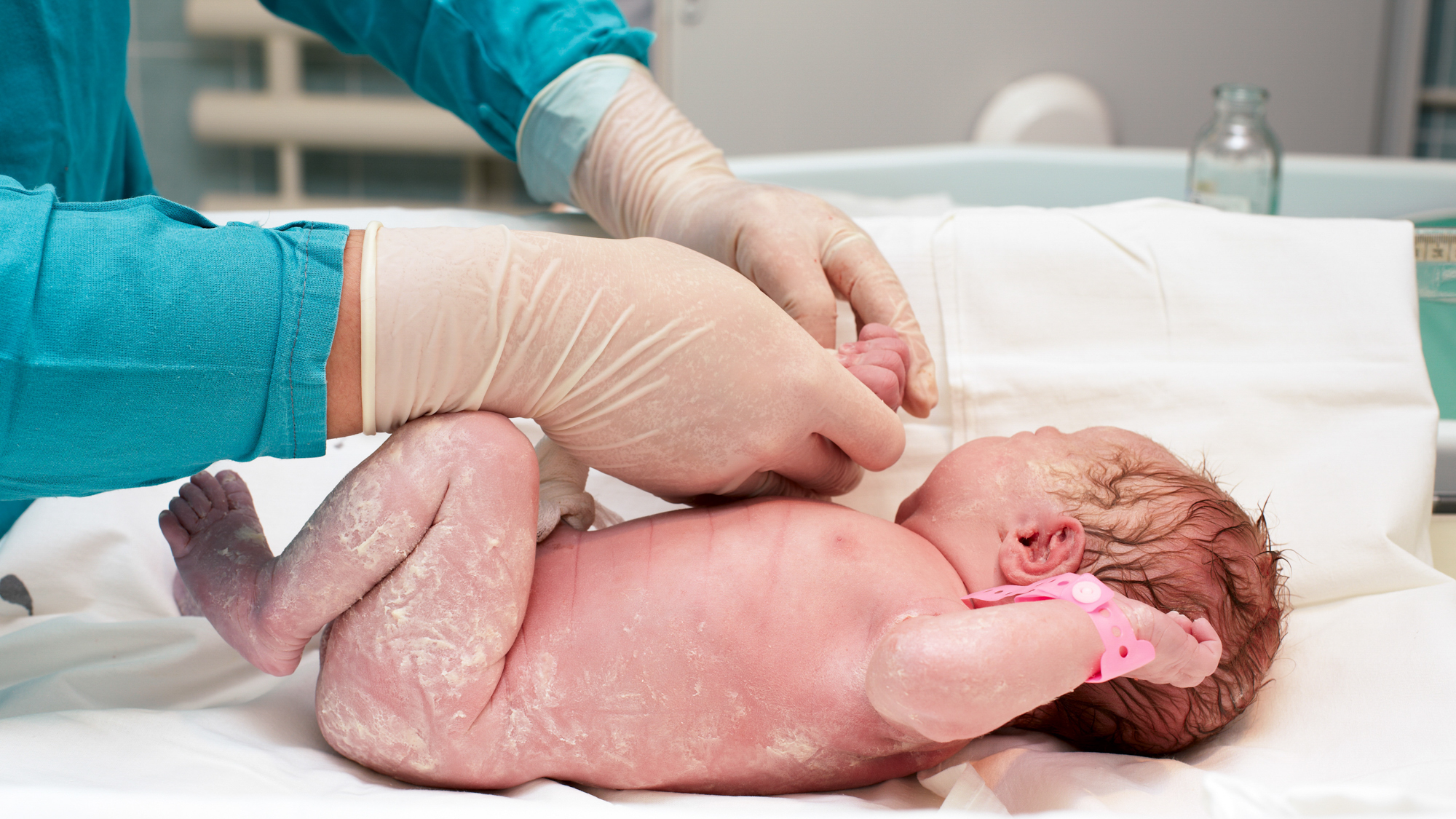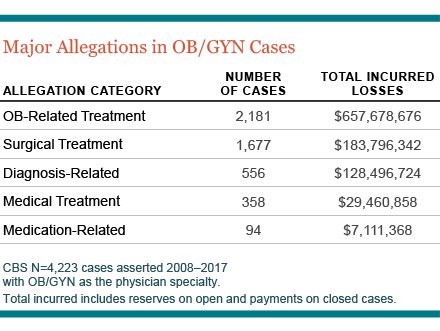Article
Risks in OB/Gyn: Primary Allegations

What’s My Risk?
Primary Allegations in Medical Malpractice Claims against OB/Gyns: How to Protect Your Patients and Yourself
As an obstetrician/gynecologist (OB/Gyn) physician, your goal is to deliver the highest-quality care for your patients. Yet in the fast-paced world of health care, sometimes things don’t go as planned. When oversights or errors occur, mothers and newborns may be put at risk, and you may be named in a medical malpractice claim or lawsuit. In fact, OB/Gyns are more likely to be named in a malpractice case than the national average for all physicians.
Further, in just over half of all medical malpractice claims that name an Ob/Gyn, serious injury or death has resulted for the mother and/or infant. To help mitigate associated risks in this specialty, CRICO has established an annual credentialing requirement (OB Patient Safety Program) for all insured-member obstetricians and certified nurse midwives (CNMs).
Safety in Numbers
CRICO member or not, you can protect yourself—and ensure the best outcomes for all involved—by taking the time to understand the most common types of allegations filed against Ob/Gyns. CRICO's national Candello Data (previously known as CBS) captures 30 percent of all medical professional liability cases across the U.S., providing a wealth of data that can help you identify your biggest areas of malpractice risk. Using that same data, CRICO has also developed a broad inventory of risk mitigation resources intended to offer Ob/Gyns concrete opportunities to improve their safety profiles.
Exploring the Risks
Deep analysis of more than a decade of professional liability cases reveals that those involving obstetricians are most commonly related to maternal and/or fetal injuries or death, punctures/perforations, and organ damage; cases involving gynecologists commonly involve surgical errors, punctures/perforations, and missed cancer diagnoses.
Top Three Major Allegations against OB/Gyns
While the process of delivering care to your patients can be fraught with challenges, the majority of errors involving Ob/Gyns occur in the delivery process. These events can involve attendings, residents, fellows, and CNMs and can cause harm to both mothers and babies.

The top three major allegations against Ob/Gyns include:
- OB-Related Treatment: Just over half of liability cases—2,181 out of a total of 4,223 cases with the physician specialty listed as OB/Gyn—are related to the obstetrics process: from not properly assessing the expectant mother, to failing to safely manage the pregnancy, to overlooking early signs of possible complications in the labor and delivery process, to missing postpartum symptoms that pose a risk for the health of the mother and baby.
- Surgical Treatment: A full 1,677 cases (40%) allege a surgery-related error, often punctures or perforations caused during surgery. Such errors can stem from improper technique, poor communication among members of the surgical team, and inadequate follow-up during the recovery process. In addition, not properly consenting a patient can also pose risks for dissatisfaction with the surgical outcomes.
- Diagnosis-Related: A smaller number of cases (13%) name a diagnosis-related error. This commonly includes oversights such an OB/Gyn missing the signs of cancer or another condition, not properly following up on abnormal test results, and not communicating with other providers to develop and oversee an effective treatment plan.
Protect Yourself and Your Patients
There are a number of steps you can take to mitigate the risk of an adverse event happening on your watch.
For instance:
- All providers and CNMs can participate in CRICO’s OB Patient Safety Program, which provides a valuable framework to help you recognize your areas of vulnerability and take all of the right steps to ensure that you’re providing the safest care for your patients.
- Create a culture of safety by implementing CRICO’s Clinical Guidelines for Obstetrical Services; these key suggestions can help you establish a collaborative care environment that respects the patient’s right to make decisions regarding her well-being and the well-being of her fetus.
- Adopt CRICO’s Neonatal Encephalopathy Guidelines to identify therapeutic hypothermia in infants and employ an evidenced-based approach to stabilize and manage this condition.
- Initiate meaningful conversations with patients and families, including providing an informed consent for patients well before labor begins so you will know your patient’s preferences and can set reasonable expectations.
- Implement a maternal early warning system using CRICO’s algorithm to help you identify patients at elevated risk for having an adverse reaction so you can intervene at the earliest signs.
By using Candello Data and best practices to drive your actions, you can close the gaps in your current processes. This will enhance a culture of safety for your patients and reduce your risk of being sued for malpractice.
Learn More
- Candello Report: Medical Malpractice in America
- Malpractice Risks in Obstetrics
- Distraction, Poor Planning for OB Patient
- Medical Malpractice Jury Verdicts Are Rare
- Safety Culture and Risk Reliability in Health Care
Related Articles
Risks in General Medicine: Contributing Factors


What’s My Risk Library

Risks in General Medicine: Primary Allegations

